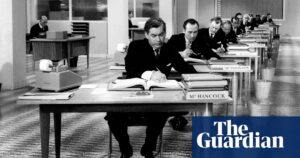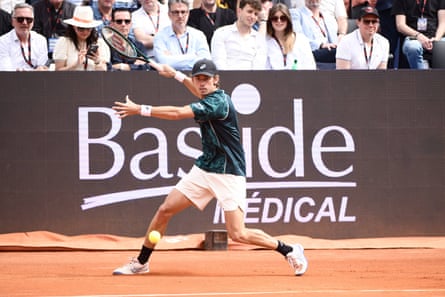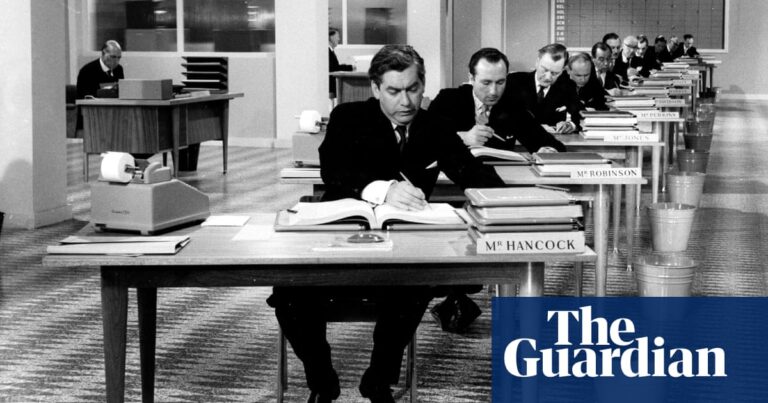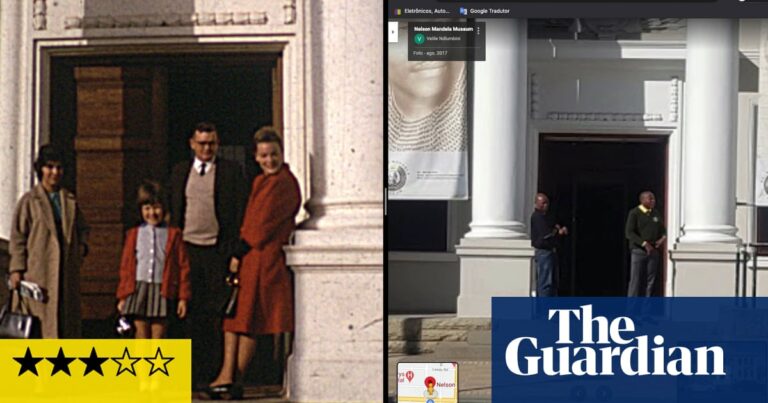The American tennis player and former Wimbledon champion Vic Seixas, who has died aged 100, did not win 15 grand slam titles during a 30-year career by serving his opponents off the court or overpowering them from the ground. Instead Seixas relied on extraordinary conditioning, an indefatigable workrate, hair-trigger reflexes and sheer force of will to compensate for any technical shortcomings.
Seixas’s fleet-footed athleticism, aggressive net-rushing and superb volleying were tailor-made for the All England Club, where the grass courts were then sown with a seed mix conducive to faster play. He made a surprise run to the semi-finals on his Wimbledon debut in 1950, losing to the eventual champion Budge Patty, then won it three years later as the second seed, coming through a five-set quarter-final epic against Lew Hoad, and another five-setter against Australia’s Mervyn Rose in the semis, before a straight-sets destruction of the unseeded Dane Kurt Nielsen in the final.
Of course this was decades before the sport’s transformation into a billion-dollar industry; while this year’s Wimbledon singles champions will take home £2.7m from a £50m prize fund, Seixas recalled being awarded a £25 voucher for his trouble, which had to be spent at a Piccadilly sporting goods shop.
But while the Wimbledon title brought prestige and personal satisfaction, it was Seixas’s memorable showing in the 1954 Davis Cup, one of the most famous events in the sport’s history, that brought him widest acclaim at the time.
Playing against the mighty Australians before a rollicking mass of 25,000 spectators at White City Stadium in Sydney – said to be the largest crowd in history to watch a tennis match at the time – Seixas contributed an opening day singles win over Ken Rosewall, who had dominated each of their six previous meetings, and a clinching victory in the doubles with Tony Trabert over Rosewall and Hoad to help America end the Aussies’ four-year stranglehold on the most cherished trophy in tennis.
The Philadelphia Inquirer reported that Seixas and the US team were celebrated on their return by a ticker-tape parade in New York City.
“Rosewall was mechanically a better player than Seixas,” Herbert Warren Wind wrote in Sports Illustrated in 1958. “So were many other players he defeated. He did it, in the last analysis, on fight.”
Seixas was born in the Overbrook Park section of west Philadelphia, the only child of Anna (nee Moon), of Irish origin, and Elias Seixas, a businessman born in the Dominican Republic who owned a wholesale plumbing, heating and roofing company. His was a middle-class Presbyterian upbringing.
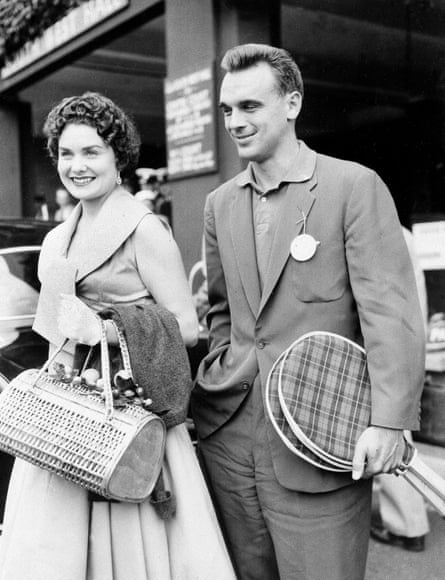
Showing a proclivity for multiple sports from an early age, Seixas took up tennis at six while acting as a ballboy for his father’s neighbourhood matches. Before long he was beating far older players with regularity and winning interscholastic titles at Dimner Beeber junior high school. He emerged as a versatile athlete at the William Penn Charter school, starring on the baseball, basketball, track and squash teams, but tennis remained his favourite sport. In 1940, he was still in high school when he entered the US National Championships at Forest Hills, forerunner of the US Open, the first of a record 28 main-draw appearances.
After enrolling at the University of North Carolina at Chapel Hill in 1941, where he played on the freshman basketball team, Seixas subsequently served three and a half years in the US Army Air Corps in the Pacific theatre of the second world war, flying 14 kinds of aircraft including P-38 Lightnings, P-40 Warhawks and P-61 Black Widow fighters. He met his first wife, Dolly Dunaway, of Spartanburg, South Carolina, after returning to Chapel Hill to finish a bachelor’s degree in commerce in 1949, before turning his attention to the globetrotting amateur tennis circuit.
His Wimbledon triumph marked both the culmination of a long-held dream and the onset of his athletic peak. In 1954, Seixas added a second major singles crown, seeing off the Australian Rex Hartwig to win the US Championships and setting a tournament record by defeating five seeded opponents, a feat since matched only by Andre Agassi in 1994.
That was one of seven grand slam titles he won that year, including the Australian, French and US doubles as well as the French, Wimbledon and US mixed. Only twice since has a man pulled off Seixas’ treble of titles at the same major, but the highest point of his annus mirabilis was yet to come in Sydney.
Continuing on the circuit long after his contemporaries had retired, Seixas’ final grand slam singles appearances took place in 1969, the second year of the open era when the sport’s four bedrock events allowed professionals to compete with amateurs, before he formally retired in 1970. The following year Seixas served as tournament referee of the US Open and was inducted into the International Tennis Hall of Fame with Althea Gibson.
Seixas, who unlike many top players of his era never turned professional, worked as a stockbroker with Goldman Sachs before starting a career running tennis clubs, first at the the famed Greenbrier Resort in West Virginia (alongside Sam Snead, who marshalled the club’s golf programme) and later at the Hilton hotel in New Orleans.
In 1989, he moved to California to set up the tennis programme at the Harbor Point Racquet and Beach Club in Mill Valley, about 15 miles north of San Francisco.
He worked as a tennis instructor and tended bar at the club until his mid-80s and lived there throughout the last decade of his life, when he was nearly blind and forced into a wheelchair by hip and knee injuries, but buoyed by an upbeat spirit that left an indelible impression on his friends and neighbours.
He is survived by Tori, the daughter of his second marriage, to Toinette Alford, which ended in divorce, as did his first.
Source: theguardian.com

